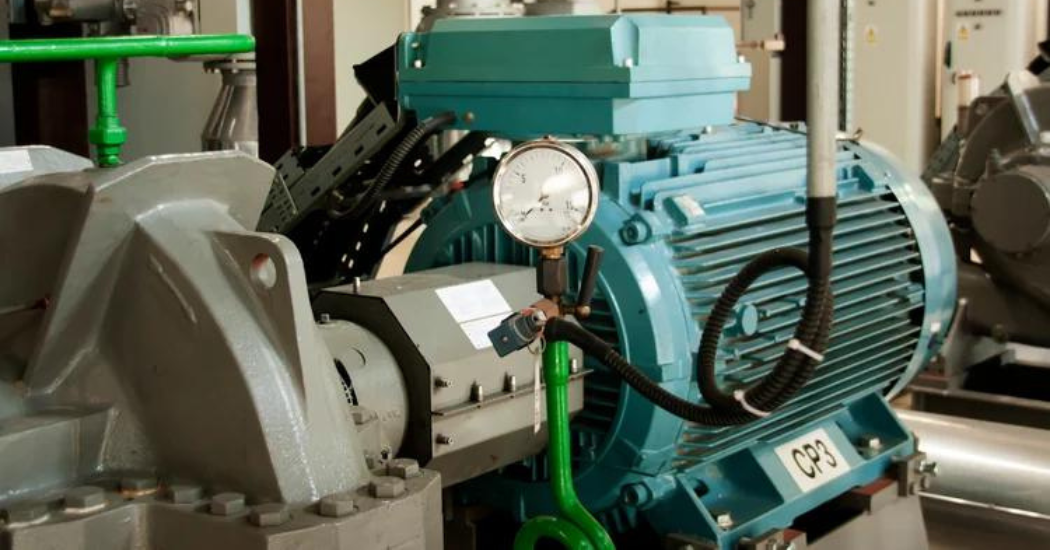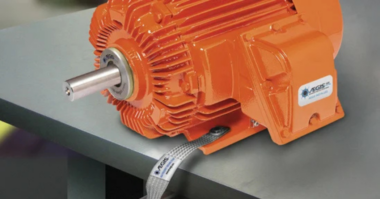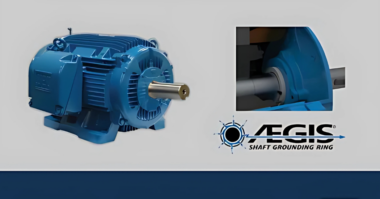Bearings are a vital part of electric motors. Designed not only to support the rotor, bearings help maintain a sufficient air gap between the stator and rotor, while also helping transfer the load from the shaft to the motor’s frame. For small electric motors, bearing failure is usually dealt with by replacing the entire motor. With larger motors, replacement is more expensive than repair. So bearing failure often leads to considerable downtime, resulting in an expensive loss of productivity. To keep bearing performance optimal and to prevent bearing failure, it’s highly desirable to use the best quality bearings available, along with protective accessories like bearing seals and shaft grounding rings, so that they’re able to withstand any environmental stresses.
Factors Affecting Bearing Performance
Bearing performance must be sufficient for the motor to work well at both higher and lower speeds, though electric motor designers must also take into account friction to reduce energy consumption. Designers must also consider bearing performance when looking at the requirements for specific motor applications. This often includes determining the limitations of various sizes and types of bearings. Performance should also ensure the design considers economic aspects like the cost of manufacturing and maintenance for a motor.
Poor bearing performance can lead to failure, which can result from:
- Overloading: When subjected to extreme loads beyond the design capabilities of a bearing, performance suffers, and parts wear out more quickly, a result of factors like too much torque, high velocities when in operation, or sudden changes to the load.
- Misalignment: With excessive vibrations caused by misalignment of the bearing, performance suffers and adds to stress on the motor, which can then lead to failure resulting from fatigue.
- Improper lubrication: An insufficient or excessive amount, or poor quality, of lubricant, causes poor bearing performance due to excess friction, which can result in overheating, leading to premature motor failure.
- Improper installation: When not installed appropriately, uneven forces cause excessive loads, resulting in worse bearing performance due to premature deterioration often instigated by overheating.
- High temperatures: When operating, electric motors generate heat that causes thermal expansion and, above a critical temperature, degradation of lubricant, negatively affecting bearing performance and lifespan.
- Electric current: Factors like static, VFD control, and improper grounding can produce stray voltage where it shouldn’t be, affecting bearing performance when the voltage discharges by arcing through the bearings, causing pitting on the bearing’s surfaces and degrading the lubricant.
- Contamination: Debris, dirt, dust, and other contaminants can affect bearing performance by causing greater abrasion and wear.
- Aging: Like any moving component within a mechanical device, bearings are affected by wear due to age, which can lead to heightened friction and higher noise levels, eventually leading to a breakdown.
The three main factors affecting bearing performance are friction, lubrication, and temperature.
How Friction Affects Bearing Performance
Friction causes wear on any moving part within a motor, including bearings. Performance reductions due to friction are only a part of the equation, as too much friction over longer periods can damage equipment and systems extensively. While bearing performance must consider a certain amount of friction when in operation, choosing the right bearings for an application to limit friction is important.
Friction occurs when there’s interaction between components within a bearing. Performance depends on the interactions between the inner race (ring), outer race, retainer, rolling elements, and the seal or shield. Friction occurs whenever the bearing rotates, but there is also static friction when the bearing is at rest. The torque necessary to overcome this static friction to begin rotation is called starting torque. Starting torque typically increases when larger bearings are used or the load increases.
Engineers need to consider two types of friction when looking at bearing performance:
- Static friction: Also known as the breakaway force, this type of friction must be overcome to allow motion to occur between two surfaces. The force (or torque, in a rotating system) needed to overcome static friction is larger than that required for maintaining motion.
- Dynamic friction: This is the force (torque) necessary for maintaining motion between surfaces once an object begins moving (rotating).
The amount of friction a bearing experiences is generally related to how well or poorly it’s lubricated.
How Lubrication Affects Bearing Performance
Proper lubrication keeps bearing performance optimal and extends the life of a bearing. The performance of an electric motor depends upon bearings being properly lubricated. Lubricants act to form a protective film separating the rolling contact services to prevent direct contact between metal components. Such contact causes friction and heat that prematurely wears the bearing. Performance issues caused by corrosion are also mitigated through the use of lubricants. For these reasons, using the most suitable lubricant for the application is important.
Lubricants should be selected according to factors that include:
- Vibratory levels
- Shaft orientation
- Sealing effectiveness
- Operational temperature
- Speed range
- Load
- General operating conditions
- Environmental factors
- Cooling needs
- Bearing size and type
How long a lubricant might last also depends on some or all of these considerations. The major factors affecting bearing performance include bearing and lubricant type, the motor’s speed and orientation, and the bearing’s operating temperature. For example, roller bearings require lubrication at shorter intervals than is the case with ball bearings.
Typically, the lifespan of lubricant in smaller ball bearings tends to exceed the motor’s service life, so these often require no additional lubrication. For a larger bearing, performance depends on regular and appropriate relubrication. (Too much lubricant is almost as bad for bearings as too little.) Additional conditions like contamination, operating environment, and sealing arrangements also affect bearing performance.
It’s absolutely essential to have sufficient lubrication to reduce torque lost to friction in a bearing. Performance is ensured by keeping bearing surfaces properly lubricated so that they stay separate, reducing friction and extending the equipment’s lifespan. It’s also important to remember that a lubricant’s composition, temperature, and viscosity affect bearing performance. Generally, motors that must move heavy loads require more viscous lubricants, while high-speed applications need lubricants with lower viscosities.
How Temperature Affects Bearing Performance
Temperature also plays an important role in bearing performance, as higher temperatures degrade lubricants and diminish their usefulness. When designing electric motors, understanding the normal operating and ambient range of temperatures in which they operate helps determine a motor’s best cooling method. While lubricants can help keep motors cool (by reducing heat generated by friction), air or water can also be used for cooling.
Bearing performance tends to be highest when within a normal temperature range during operation. For bearings in electric motors, this will be between 160°F and 230°F (71°C to 110°C). For consistent bearing performance, lubricants should be able to perform well throughout this temperature range, though there are high-temperature lubricants able to handle higher temperatures. When ambient temperatures significantly differ from a motor bearing’s operating temperature, it’s important to check internal bearing clearance and adjust this so there’s no excessive play, a procedure called preloading.
Bearing temperature, in most cases, will start rising swiftly once the motor starts, continuing to rise until it reaches a certain temperature. At this point, bearing temperature remains stable and constant. The time it takes to reach this stable operating temperature depends on various circumstances. These include the heat capacity and conductivity of the bearing housing and motor shaft, the amount of heat generated, and the type of lubricant used.
While the ideal operating temperature will differ depending on the bearing and application, selecting the right bearing for the job is crucial. The bearing must be able to handle the operating temperatures when the motor is running. Its performance depends on the balance between the rate at which heat is produced and the rate at which it dissipates.
Combined Effects of Friction, Lubrication & Temperature
All three of these factors – friction, lubrication, and temperature – combine to affect bearing performance. Friction and viscosity of the lubricant work together to increase bearing temperature. Heat will dissipate into the shaft and bearing housing, with the lubricant helping to stabilize operating temperatures. Too much lubricant can negatively affect bearing performance by causing temperatures to rise; however, a general rule is that lubricant should fill 25-35% of the empty space in the bearing. SKF has a widely used formula for calculating the appropriate volume of grease based on the bearing’s size.
Significant differences in temperature between the inner and outer race reduce the clearance of a bearing. This is a problem while running at a steady speed and, especially shortly after startup. Increased rise in temperature, therefore, affects a bearing’s service life and is why using higher-quality lubricants can help improve the lifespan of a motor.




